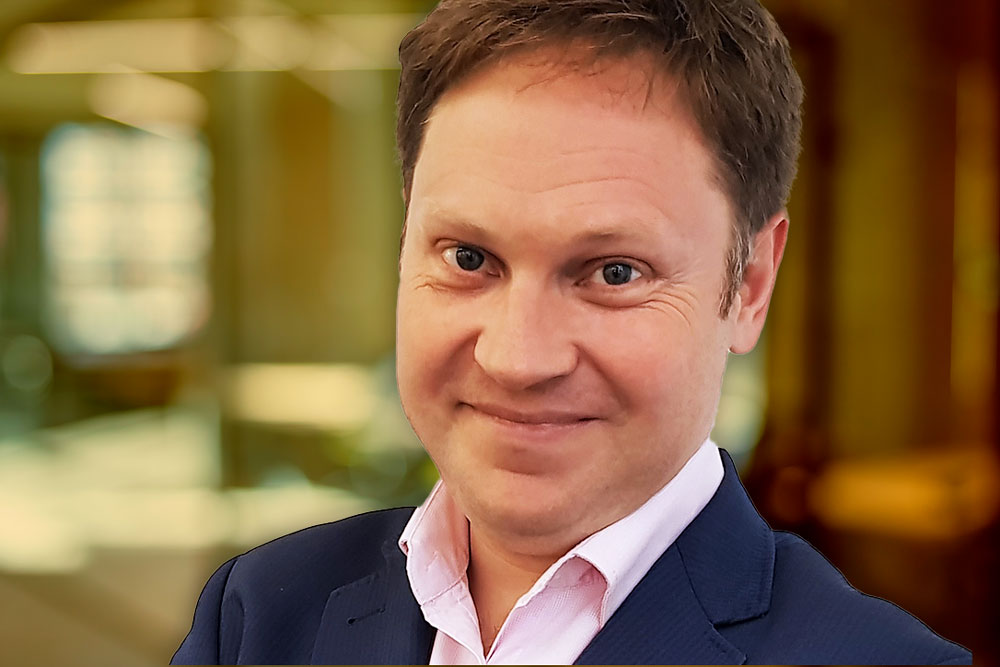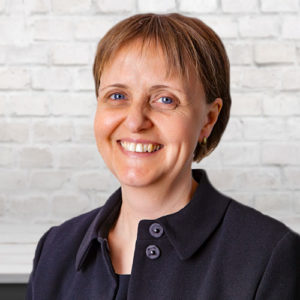The Highland Marketing advisory board wanted to discuss how health and care organisations can make sure they are ready to implement technology and get the best use out of it. Who better to lead the discussion than James Freed, chief information officer for Health Education England?
“Every year,” James Freed told the Highland Marketing advisory board, “I check whether Moore’s Law still applies. And every year, there are a few articles saying it might stop applying soon, but for the moment we are still seeing an exponential rise in the number of components on a microchip.
“At the same time, we are seeing a similar rate of change in the technology that is powered by those chips. What we are not seeing is an improvement in our ability to use it.” How to improve health and social care’s ability to make use of technology was the subject of the advisory board’s most recent discussion.
James Freed, the chief information officer for Health Education England, underlined why this question is so pressing. Focusing on technology, rather than people, was one reason the NHS’ big computerisation effort, the National Programme for IT, failed, he argued (from experience, working for NHS Connecting for Health); and the health service can’t afford to make the same mistake again.
Growing recognition of the issues
Fortunately, a number of initiatives have been launched over the past five or six years to try and learn from experience. These included the Personalised Health and Care 2020 strategy, published in November 2014, which led to digital skills programmes for both NHS staff and users (with Freed contributing to the staff element).
Two years later, in September 2016, the Wachter Review lasered in on the skills of NHS IT leaders, which led to the creation of the NHS Digital Academy (with Freed in the first cohort) and investment in organisations such as the Federation for Informatics Professionals, or FEDIP.
The year after that, Health Education England published a workforce strategy that talked about creating an element of digital in all health and care roles. This paved the way for The Topol Review and then the NHS People Plan, which also looked at the competencies of the boards who oversee IT investments and programmes.
Health Education England’s Digital Readiness Programme
Against this background, Freed is deputy SRO for The Digital Readiness Programme for Health Education England. “We ran four or five consultations and asked: ‘What does digital readiness mean to you’,” he explained. “And it turns out that digital readiness has two elements: being digitally willing and being digitally able.
“Able is the bit that people tend to focus on. It is being able to use Excel or the electronic patient record, but it is also being able to use digital to do what you need to do, but better. We have a digital capability framework with dimensions that articulate a learning path from ‘never touched a mouse’ to ‘doing advanced analysis’.
“Willing is the bit people can forget. It is wanting to solve a problem and to use technology to do it.” Or, on the board and leadership side, to be willing to let them. Because, as Freed put it: “One of the things that we see with junior doctors is that when they start work they see that things are not being done as well as they could be done, and they want to change things.
“Six months later, they’ve often stopped doing that. So, there is a real duty of care on organisations to manage well and to make sure that people can use complex technology like an EPR to its full capacity.”
Bearing this in mind, two of the programme’s six workstreams focus on supporting our senior leaders and digital experts, while a third is focused specifically on evolving the NHS Digital Academy as a ‘home’ for digital courses and communities. Then there is a stream on uplifting the digital literacy of the wider workforce and one on how to build the future digital workforce.
After which, the sixth stream is about embedding the programme into social care “because,” Freed said, “that is a different beast entirely: a different workforce, a different organisational structure with lots of small, sole providers… it makes reaching 1.3 million NHS workers look easy.”
Foundations for an exciting future
Andy Kinnear, a former chair of the British Computer Society Health and Care Executive and enthusiastic supporter of NHS informatics professionalism, said he was glad to see how quickly this agenda has developed. “It is only five years since you and I were being interviewed by [Professor Robert] Wachter and since then we have had 300 people go through the NHS Digital Academy and FEDIP has been sorted,” he said.
“We have got chief information officers being accredited and in time will be spending something like ten days per year on continuing professional development. We have got integrated care systems coming on stream to drive change. It is really exciting and gives me reason to be hopeful about the future.”
However, James Norman, the chief information officer, EMEA, at Dell EMC, and a former NHS director of IM&T, said the attitude of boards would be critical. Freed agreed and said this was why so much work has gone into the ‘supporting our senior leaders’ stream of The Digital Readiness Programme.
“Another thing that we heard in our consultations was boards saying: ‘digital scares us’ so ‘we have someone to ‘get it’ for us’,” he said. “That’s usually a CIO and usually they don’t sit on the board. So, there is a divide there in terms of what the CIO and the board expect to do and how they see the future.
“We wanted to change that culture. Part of that is developing CIOs. Part of that is developing boards. We looked at the dimensions of digital leadership and mapped them to the Care Quality Commission’s ‘well led’ programme, and we developed a package to address them.
“We took that to NHS Providers, which has run sessions involving board members from almost half of the organisations in the country over the past three months, and they have been very well received.”
Readiness at all levels
In further discussion, Cindy Fedell, a health CIO who has just taken up a new post in Canada, welcomed the emphasis on bringing IT and trust leaders together. “Somebody asked me an interesting question: are we at a tipping point with digital in the NHS?” she said.
“I said I thought we were at a watershed, but not yet at a tipping point. When I thought about why, it was because people still think of IT as an end in itself. They think about ‘the EPR’ or ‘rolling out Attend Anywhere’ [a digital consultation platform]. They don’t think about what they want to achieve by using technology, and we really need to get into that operational, transformational piece.”
Nicola Haywood-Alexander, chief information officer for NHS Lincolnshire Sustainability and Transformation Partnership, argued boards also needed to think creatively about how to fund digital capability in their organisations. Some spent a lot of money on second and third-line support, she said, that could be better directed to learning and training initiatives that might avoid the need for it.
She also noted that “we need to pay more attention to making sure that technology is usable, because if technology is badly designed, people won’t want to use it and will struggle to use it.”
Advisory board chair Jeremy Nettle argued that it is also important to involve staff in digital change, as they will be able to see where issues are likely to arise.
Freed absolutely agreed with this. “It is actually a central tenet of the Government Digital Service Manual,” he said. “It talks about a ‘common understanding of services’ and everybody being able to articulate ‘the one thing that is most important’, so they can be invested in understanding why something needs to change in order to improve it.” Being aware of this was “one of the great skills” for boards to command, he added.
Overcoming Covid challenges, grasping Covid opportunities
Meanwhile, entrepreneur Ravi Kumar asked where patients came into the picture “because a lot of care is about self-treatment and self-motivating.” Freed also agreed with this, although he said the issue was more complex. “A lot of the challenges around digital literacy are not unique to health,” he pointed out.
“Issues like understanding how to login to a computer, how to protect personal privacy, they are common to lots of things that people need to do online.” Because of that, he added, there are a lot of players in this space, including companies that need consumers to shop or bank online. So, while HEE has a role, it doesn’t own the role.
Finally, and inevitably, the discussion turned to the coronavirus emergency, which Freed described as “a double-edged sword.” On the one hand, he said, the pressure of dealing with Covid-19 has made it challenging to engage organisations big picture issues, like digital readiness.
But on the other, it has made many much more receptive. “We are going along the road much faster than we expected,” he said. “Covid has made everybody understand that digital is the way forward, and that it’s possible to do it, and that it’s not scary, as long as it’s done right.



